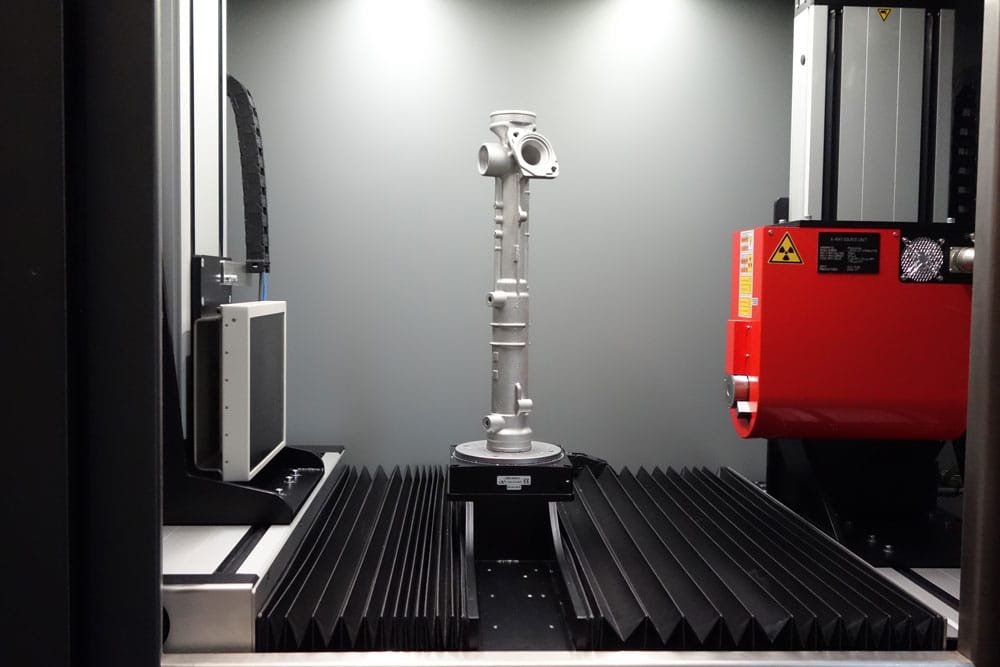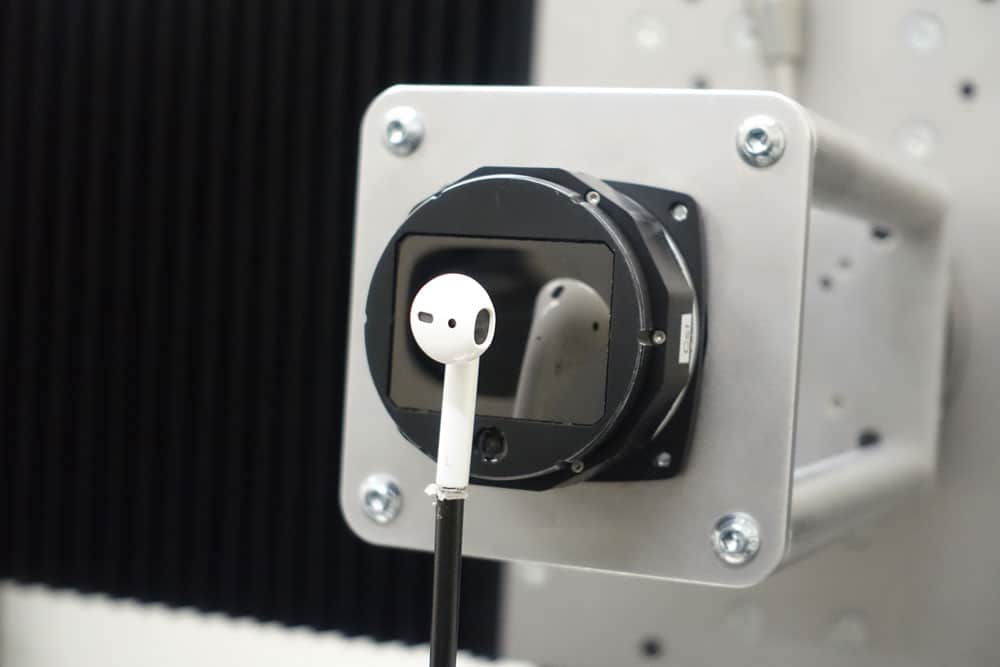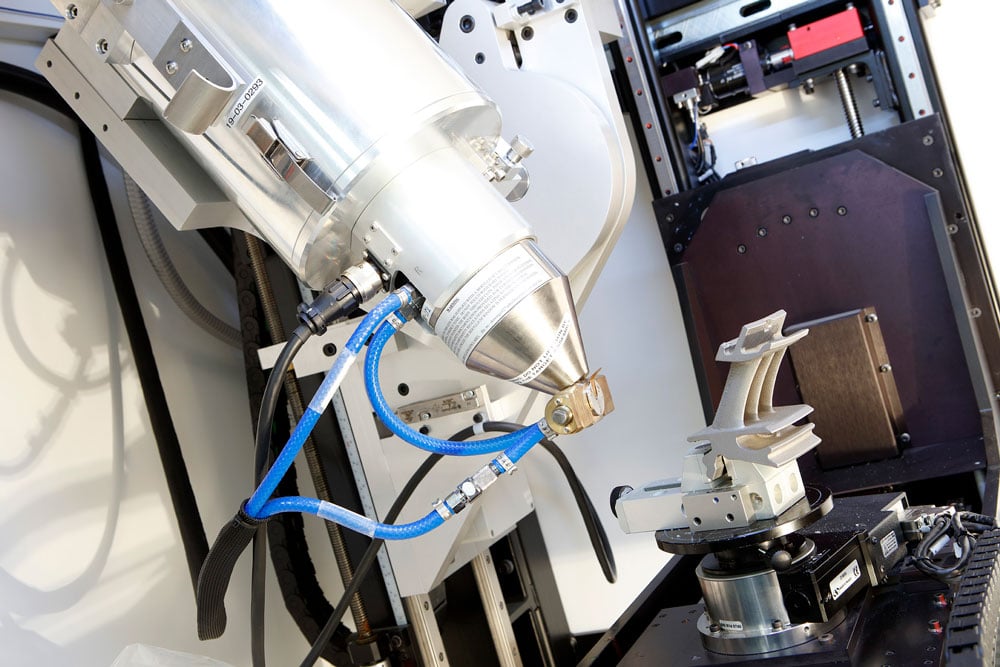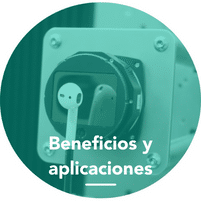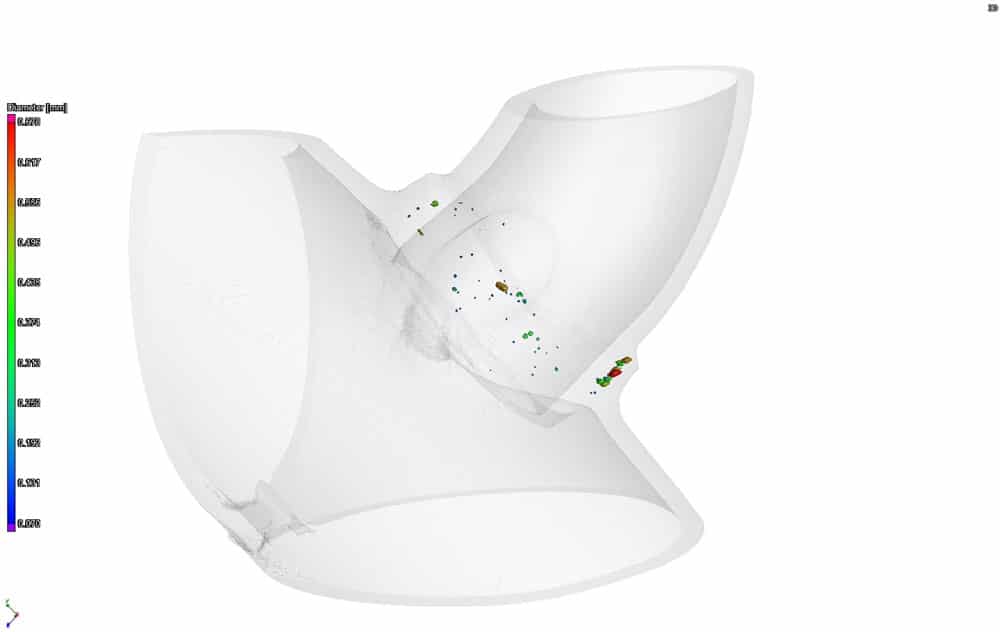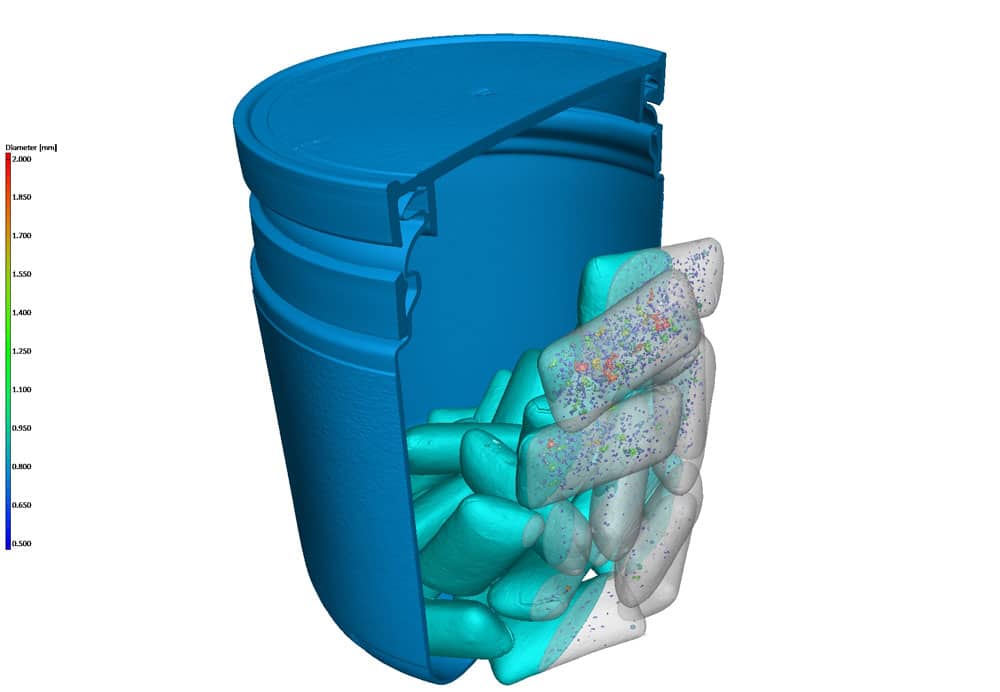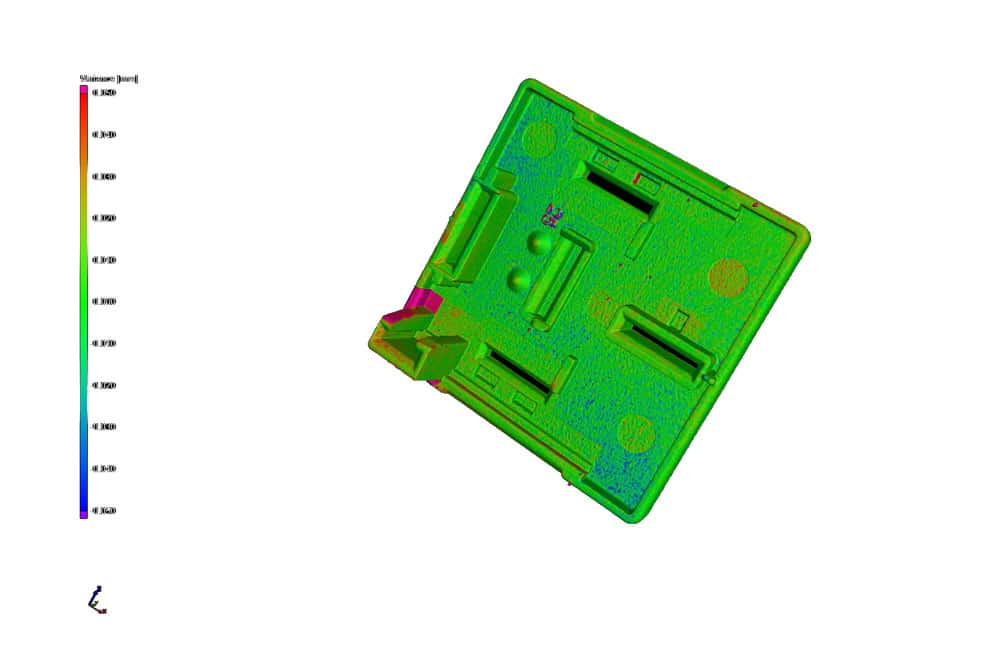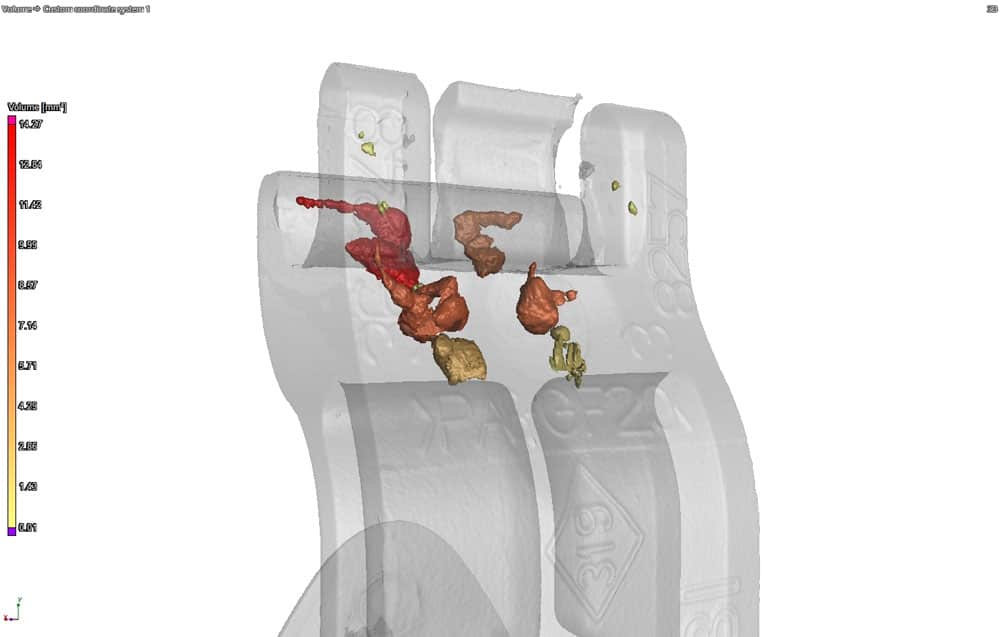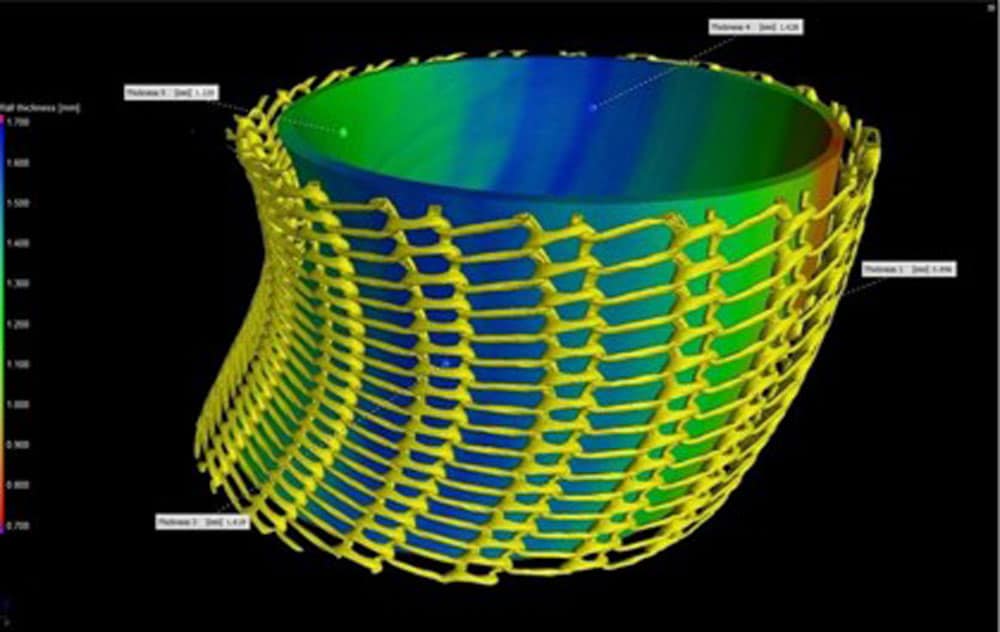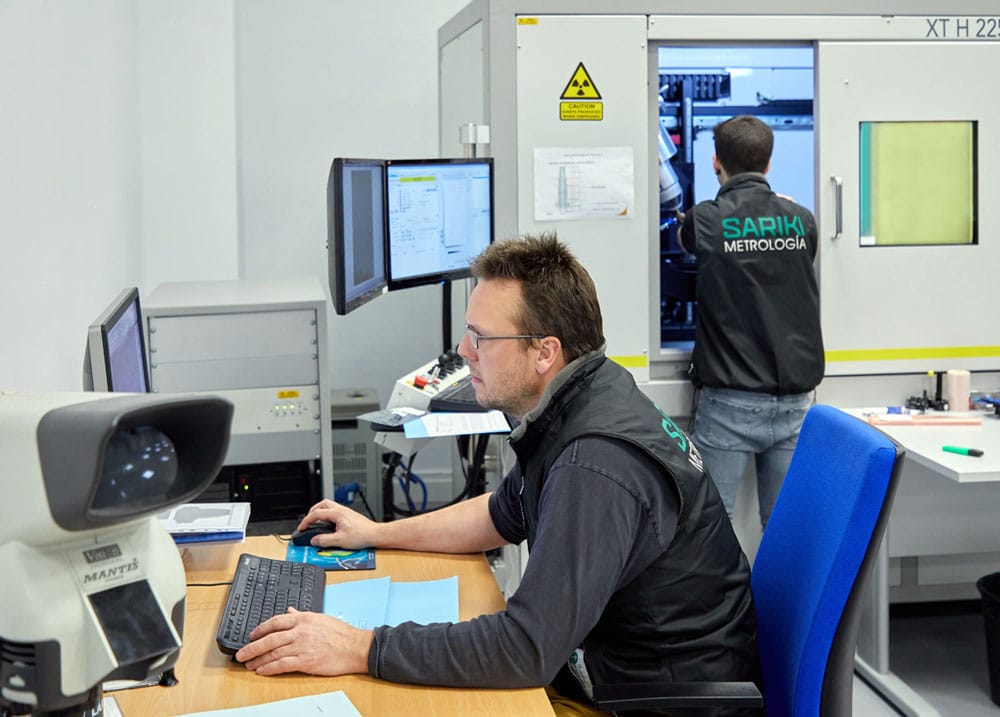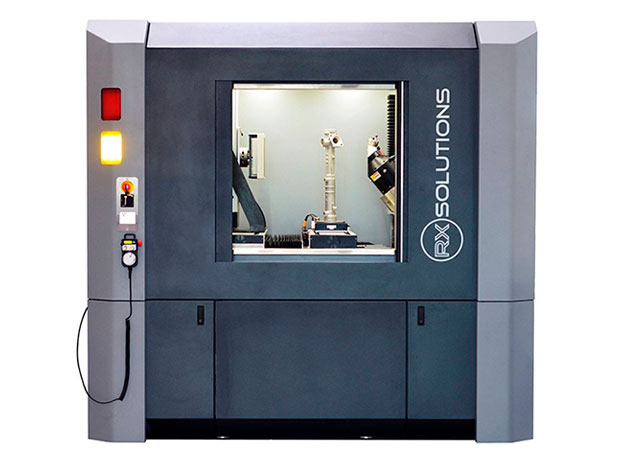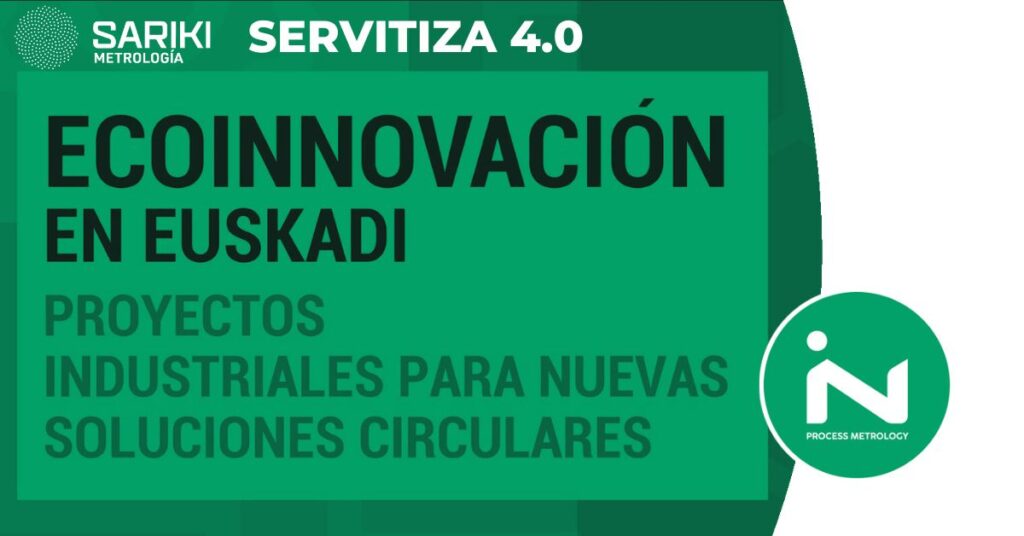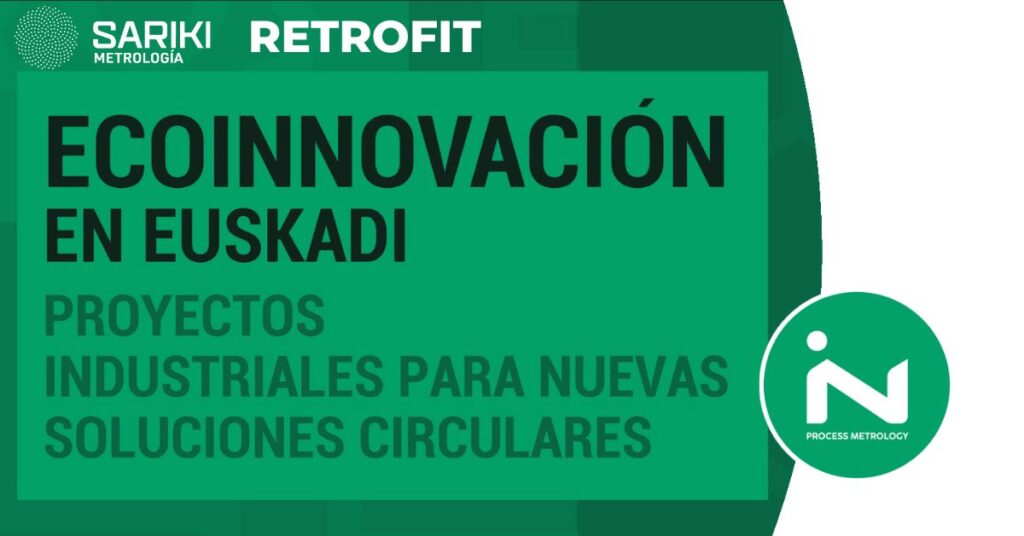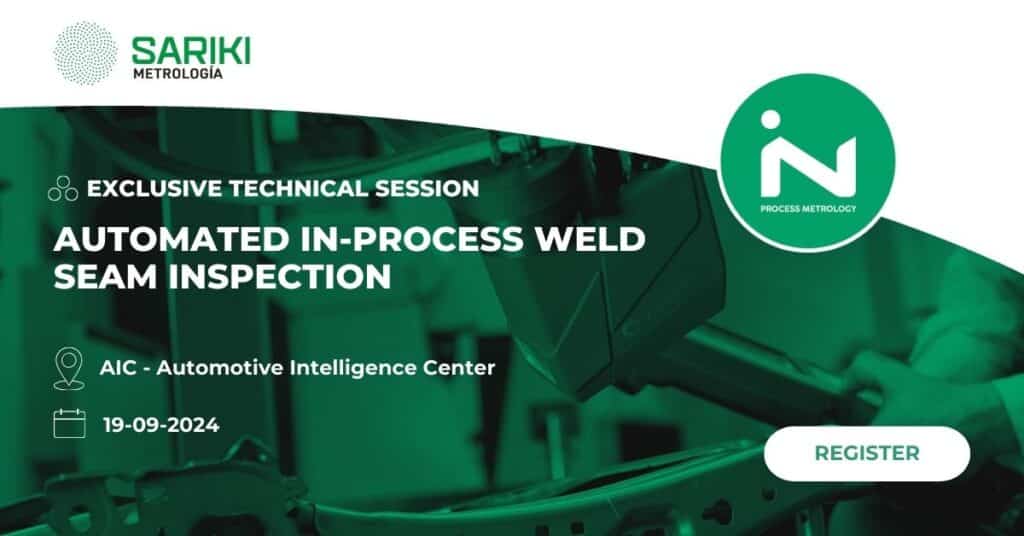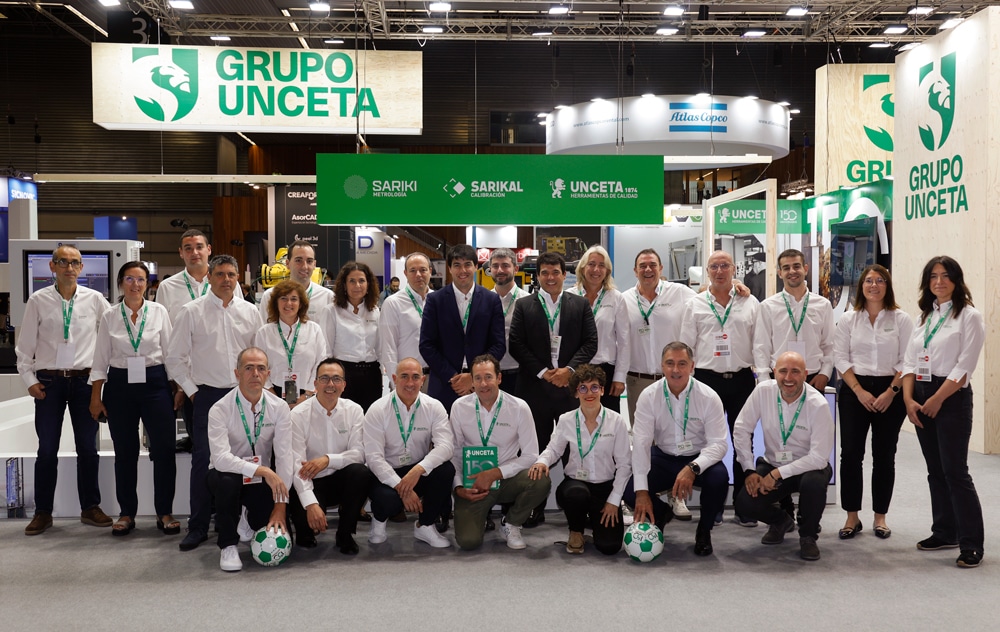How does industrial tomography work? 10 frequently asked questions about X-RAY CT.
En este artículo, se tratará de resolver las diez preguntas más frecuentes sobre la tomografía 3D con rayos X. Pero, en primer lugar…
¿Qué es la tomografía industrial?
La tomografía industrial, o tomografía industrial computarizada (TC), es una de las tecnologías más innovadoras para la identificación de defectos internos. Para ello, se aplica un proceso no-destructivo de captura de imágenes mediante la tecnología de rayos X.
Tradicionalmente, la única manera de controlar internamente las piezas era realizando ensayos destructivos. Pero la aplicación de los rayos X a la industria permite visualizar las características internas y externas de las piezas con alta precisión, ahorrando costes de destrucción.
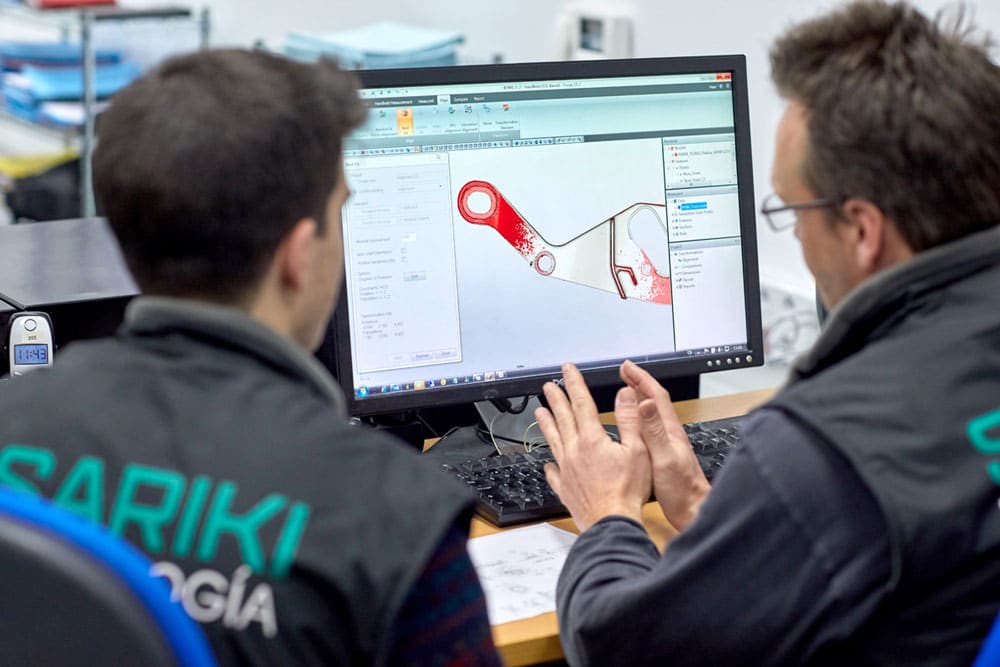
Son muchos los sectores que han decidido optar por esta tecnología: automoción, aeronáutica, médico… Debido a las ventajas y a las posibilidades que permite este tipo de análisis de defectos.
A continuación, se muestran 10 preguntas frecuentes sobre la TC con rayos X para poder comprender las especificaciones de esta novedosa tecnología:
1. ¿Cuándo se utiliza la tomografía computarizada con rayos X?
La tomografía 3D con rayos X es la mejor tecnología para obtener un examen rápido, no-destructivo y detallado de diferentes estructuras. Sus aplicaciones varían, desde caras internas y externas, industriales o incluso conjuntos. Con sólo un rápido escaneo de TC, se pueden evaluar todos los aspectos estructurales y dimensionales de una pieza.
En resumen, se puede utilizar en todas las fases del ciclo de vida del producto, tanto para desarrollar un nuevo producto como para detectar defectos internos y externos en las piezas. La tomografía industrial computarizada es la tecnología no destructiva más polivalente del sector para mejorar la calidad de los productos.
2. ¿Dónde se utiliza principalmente la tomografía industrial computarizada?
La TC se utiliza en diferentes sectores, como, por ejemplo, el sector industrial o en la investigación académica. En el sector industrial, esta tecnología puede ser utilizada para el desarrollo de un nuevo producto (I+D, ingeniería, etc.), en producción o en el control de calidad (análisis de fallos, etc.). Por otra parte, en el sector académico, se utiliza principalmente en centros de investigación y universidades.
3. ¿Cómo sé que mi pieza se puede escanear?
En este caso, han de tenerse en cuenta 2 características importantes de la pieza. La primera, es el aspecto físico. Las piezas más pequeñas y las áreas de interés más localizadas/específicas, dan lugar a un resultado de mayor resolución.
Por otra parte, hay que considerar la composición de la pieza. La densidad del material de la pieza es crucial, ya que la potencia de rayos X necesaria para penetrar el material no es la misma. Por ejemplo, se necesitará más potencia para penetrar un anillo de oro, que para penetrar una botella de plástico.
4. ¿Cuánto tiempo se necesita para escanear una pieza?
Como en las características de la pieza, el tiempo de escaneo también puede variar. Puede durar desde 2 minutos hasta varias horas, dependiendo de lo que se busque en la pieza, y la configuración que la TC de rayos X requiera. Puede llevar 30 minutos detectar una simple grieta y ver dónde se encuentra exactamente, o experimentar problemas de montaje por las diferentes condiciones y muchas horas para escanear materiales a alta resolución.
5. ¿Se puede escanear más de una pieza al mismo tiempo?
Se pueden inspeccionar de manera fácil y sencilla varias piezas en un solo escaneo. Dependiendo del volumen y la densidad de la pieza, se pueden escanear varias piezas a la vez, que pueden colocarse en el mismo porta muestras. En el último paso después del escaneo, el post procesamiento, se separan automáticamente las distintas piezas.
6. ¿Se pueden automatizar las exploraciones TC de rayos X?
Con la tomografía industrial, la automatización es posible añadiendo un cargador de muestras. Los sistemas de TC de rayos X equipados con dichos cargadores pueden escanear múltiples piezas sin que la intervención del operario sea necesaria. Por ejemplo, con el modo de escaneo automático durante la noche, se garantiza un funcionamiento 24/7.
Como se puede observar, son muchas las ventajas que aporta la tomografía industrial al proceso de calidad.
¿Quieres conocer más beneficios y aplicaciones de esta novedosa tecnología?
7. ¿Cómo se escanea una pieza con la tecnología de rayos X?
El funcionamiento es bastante sencillo y se compone de dos pasos. El primero es la adquisición, donde la pieza se expone a la fuente de rayos X y captura imágenes en 2D repetidamente en 360 grados. El segundo paso es la reconstrucción, donde todas las imágenes en 2D del proceso anterior se reconstruyen en un renderizado 3D que permite un análisis exhaustivo de las características internas y externas de la pieza.
8. ¿Qué se ve en una imagen reconstruida?
En la TC de rayos X, la reconstrucción de imágenes es un proceso en el que, después de escanear la pieza, un potente algoritmo genera automáticamente un volumen virtual 3D de la pieza escaneada. Este paso dura unos segundos y, seguidamente, se puede trabajar directamente en el renderizado, recorrer la muestra, buscar defectos, comprobar ensamblajes, localizar grietas…
9. ¿Cómo se aumenta la calidad de las imágenes reconstruidas?
Son muchos los parámetros que afectan a la calidad de la imagen, y para eso RX Solutions facilita su gestión con su software de tomografía X-Act. Este software, que se encarga de todo el proceso, ofrece una gestión intuitiva y ergonómica de los siguientes factores: promedio, número de imágenes, calibración, modo de adquisición y corrección de artefactos durante la reconstrucción, entre otros.
10. ¿Necesitas ser un experto para utilizar un sistema de TC de rayos X con tu producto?
Depende del sistema y del proveedor con el que se trabaje. Los sistemas de tomografía computarizada de RX Solutions están diseñados para mejorar la experiencia de usuario y facilitar su utilización. Por eso, se requiere de poca formación para utilizar este equipo de TC.
Dado que los usuarios de la máquina pueden tener diferentes expectativas y requisitos, RX Solutions ha adaptado la ergonomía de sus sistemas para facilitar su uso. Para ello, ha programado un software con 3 interfaces diferentes: “Modo experto”, “Adquisición guiada” y “Modo asistente”. Este software agiliza todo el flujo de trabajo, desde la configuración del TC hasta la reconstrucción de la pieza. Gracias al software X-Act sólo se necesitan unos pocos clics para iniciar un escaneo, sea cual sea la muestra.
Desde Metrología Sariki, nos comprometemos a acompañarte en tu proceso de verificación de piezas mediante ensayos no-destructivos.
Para ello, disponemos tanto del servicio de medición con tomografía, como la posibilidad de adquirir una solución a medida de la mano de nuestro proveedor RX Solutions.
¿Tienes alguna otra pregunta sin resolver?
Ponte en contacto con nosotros y responderemos a todas tus cuestiones sin compromiso.


